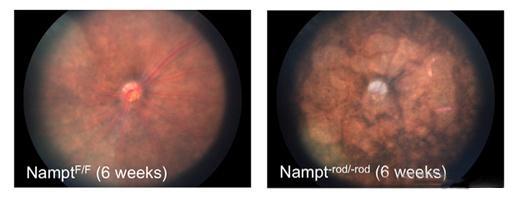
The light-sensitive cells of the eye include rods and cones, which are responsible for vision and color perception under low light and strong light respectively.
The study found that a lack of NMN caused photoreceptor cells to die in mice, severely affecting vision.
NMN treatment can restore vision. This study provides new ideas for the treatment of neurodegenerative diseases.
The process by which we see objects is actually the process by which the light emitted or reflected by objects stimulates the photoreceptor cells in the eye, and the signals they produce are transmitted through the nerves to the brain.
Light-sensitive cells in the eye include rods and cones, a larger number of which are not only sensitive to motion, but also regulate vision in low light, enabling us to achieve "night vision."
Cones allow us to see more detail in sufficient light and give us the ability to perceive color.

As people get older, they are prone to a variety of vision diseases, such as age-related macular degeneration, which causes the gradual death of photoreceptor cells, resulting in loss of vision.
In 2016, the research team of Professor Shinichiro Imai at the University of Washington found that lack of NMN (niacinamide mononucleotide) caused the death of rod and cone cells in mice, which significantly reduced the vision of mice;
Treating mice with NMN reversed this and restored the mice's vision.
The study was published in the journal Cell Reports.
In the experiment, the researchers first knocked out the gene expressing the Nampt protein in mouse rod cells by gene editing means, which led to a significant reduction in NMN levels in mouse rod cells.

After 6 weeks of normal feeding, the researchers found that mice lacking rod cell NMN (NAMPT-rod /-rod) showed a significant decrease in visual acuity and performance on electroretinogram (ERG) tests compared to control mice (NamptF/F).

At the same time, the fundus images of mice lacking rod cell NMN were more cloudy, and a series of symptoms such as retinal decomposition and optic nerve decline occurred. It is proved that rod NMN plays a crucial role in maintaining the vision of mice.

Next, the researchers knocked down the gene for the Nampt protein on the mouse cone cells, and similar results showed a significant reduction in vision. This once again verified the important role of NMN levels in maintaining the function of photoreceptor cells in mice.

After confirming the damage to vision caused by the lack of NMN, the researchers tried to treat mice with NMN to restore their vision.
The results showed that after receiving 300mg/kg of NMN intraperitoneal injection (approximately 1.35g in humans) for 6 consecutive days, mice lacking either rod NMN or cone NMN showed significant visual improvement.

In conclusion, this study confirmed the key role of NMN in protecting visual health by artificially reducing and restoring NMN levels in mouse photoreceptor cells.
And as the researchers said, "because the NMN synthesis pathway is ubiquitous in all kinds of neurons, and supplementing NMN may have a protective effect on nerves, this study also provides a new idea for the treatment of other neurodegenerative diseases, such as brain atrophy and Alzheimer's disease."
References:
Lin, J. B., Kubota, S., Ban, N., Yoshida, M., Santeford, A., Sene, A., Nakamura, R., Zapata, N., Kubota, M., Tsubota, K., Yoshino, J., Imai, S. I., & Apte, R. S. (2016). NAMPT-Mediated NAD(+) Biosynthesis Is Essential for Vision In Mice. Cell reports, 17(1), 69–85. https://doi.org/10.1016/j.celrep.2016.08.073
- Explore NMN: A new hope for anti-aging
- Long-term supplementation of NMN can increase vascular elasticity
- The secret of glutathione Body whitening
- The antioxidant activity of NMN may prevent liver damage
- NMN is essential for maintaining vision in old age
- NMN: Unlocking new hope for life vitality
- Glutathione injection in the medico-Chinese ratio dosage usage and precautions!
- Pathways to increase mitochondrial glutathione levels
- Glutathione supplementation can reduce skin dark spots and wrinkles
